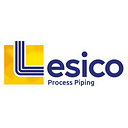Semiconductor wafer fabrication, also known as semiconductor manufacturing or simply wafer fab, is the process of producing integrated circuits (ICs) on silicon wafers. It involves a series of complex steps to create the intricate patterns and structures that make up electronic devices.
Here is a general overview of the semiconductor wafer fabrication process:
Wafer preparation: The process begins with the preparation of the silicon wafers. Initially, the wafers are sliced from a single crystal ingot of silicon and then polished to achieve a smooth, flat surface.
Cleaning: The wafers are thoroughly cleaned to remove any contaminants, particles, or organic residues that could negatively impact the fabrication process.
Photolithography: This step involves transferring a pattern onto the wafer using a process called photolithography. A photosensitive material, known as a photoresist, is applied to the wafer surface. A mask or reticle, containing the desired circuit pattern, is then aligned and exposed to light. The light passes through the mask, creating a patterned image on the wafer surface.
Etching: Etching is performed to remove specific areas of the wafer not protected by the photoresist. Chemical etchants or plasma etching techniques are used to selectively remove material from the wafer, creating the desired circuit patterns.
Doping: Doping is the process of introducing impurities into specific regions of the wafer to modify its electrical properties. Different dopants are used to create n-type (negative) or p-type (positive) regions, which form the basis of transistor structures.
Deposition: Thin layers of various materials, such as metals, insulators, and semiconductors, are deposited onto the wafer surface using techniques like chemical vapor deposition (CVD) or physical vapor deposition (PVD). These layers serve different purposes, including providing electrical conductivity, insulation, or acting as a barrier.
Oxidation: Oxidation is a process where a thin layer of silicon dioxide (SiO2) is grown or deposited on the wafer surface. This layer acts as an insulator or a protective layer for the underlying circuitry.
Metallization: Metal layers, typically aluminum or copper, are deposited on top of the wafer surface to provide interconnections between different circuit elements. The metal layers are patterned using a combination of photolithography and etching techniques.
Testing and inspection: Throughout the fabrication process, testing and inspection steps are performed to ensure the quality and functionality of the fabricated devices. This includes electrical testing, visual inspection, and various metrology techniques to measure critical dimensions and parameters.
Packaging: Once the fabrication of the semiconductor devices is complete, they need to be packaged to protect them from external elements and provide electrical connections. Packaging involves encapsulating the devices in protective materials and connecting them to external leads or pins.
It’s important to note that the semiconductor wafer fabrication process is highly complex and involves numerous additional steps, such as ion implantation, chemical mechanical polishing (CMP), and other specialized processes, depending on the specific requirements of the integrated circuits being manufactured. The process is carried out in specialized facilities known as semiconductor fabs or foundries, which require highly controlled environments and sophisticated equipment.
